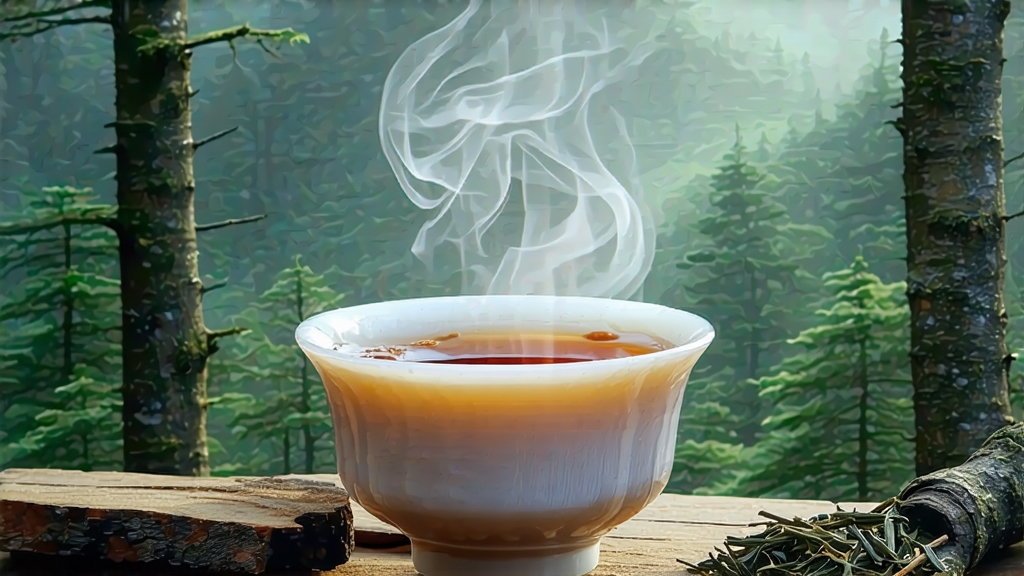
When European tea drinkers first encountered the dark, tightly-twisted leaves that produced a bright crimson cup in the early seventeenth century, they had no word for the category; they simply called the cargo “bohea,” the Amoy-dialect pronunciation of “Wuyi.” That tea was Lapsang Souchong, born in the granite gorges of northern Fujian, and every later black tea—Assam, Ceylon, Keemun, even Earl Grey—owes its existence to the techniques first worked out by the tea farmers of Tongmu village. Today, walking the narrow slate paths of this protected UNESCO core zone, one still hears the soft crackle of fresh resinous pine at dusk, the same scent that once drifted across the Dutch East India Company’s wharves at Batavia and convinced London merchants that tea could be more than green.
History: From Mountain Refuge to Global Passion
Legend places the origin moment in 1568, when a passing army forced villagers to abandon freshly picked leaves. Upon returning, the farmers found the leaf oxidized; to salvage it they dried it over green pine boughs, and the smoke tamed the mustiness while adding a sweet, provocative note. Whatever the truth, by 1604 Dutch traders were auctioning “Lapsang” in The Hague at prices higher than silver. The East India Company’s records for 1669 list 143 lb of “souchon” among gifts presented to Charles II, inaugurating two centuries of bohea mania. When the British later transplanted tea to India and Sri Lanka, they carried with them Tongmu withering racks, rolling tables, and the notion that fully oxidized leaf could travel without losing flavor—an idea that reshaped global agriculture.
Micro-terroir: Why Only Tongmu Tastes Like Tongmu
The Wuyi range is a 500-million-year-old fault block lifted high enough to trap moist monsoon clouds, creating a perpetual mist that filters sunlight into a soft, silver diffusion. Day-night temperature swings of 15 °C slow growth, condensing amino acids, while the granite subsoil weathers into sandy, slightly acidic loam rich in potassium and fluorine. At 27° north latitude the bushes sit precisely where the red line of 1 200 mm annual rainfall intersects 200 fog-bound days, conditions impossible to replicate even in neighboring townships. Within Tongmu, the micro-plots of Guanlin, Mucun, and Matou further subdivide flavor: Guanlin yields a cool pine-top note, Mucun a deeper resinous bass, Matou a whisper of dried longan. Outsiders may smoke leaf with pine, but without this air, this water, this fog, the cup lacks the elusive “rock rhyme” that Wuyi connoisseurs call yan yun.
Cultivars: Three Bushes Worth Knowing
- Xiaozhong (Small-Leaf Original): The landrace propagated by seed for centuries, cold-resistant, with tiny oval leaves that produce a bright, focused liquor and the cleanest smoke.
- Zhenghe Da Bai (Big White): A larger-leaf cultivar moved north during the 1850s; it gives a maltier body and is preferred for the modern unsmoked style called “zheng xiao zhong.”
- Jin Guan Yin (Golden Tie-Guan-Yin Hybrid): A recent cross that adds orchid fragrance to the traditional pine matrix, creating a hybrid “floral-smoke” profile prized in Shanghai boutique cafés.
Craft: Turning Green Leaf into Black Memory
Picking begins at Qingming when two leaves and a bud still wear their spring down. The morning’s haul is carried in bamboo baskets so shallow that no leaf bruises under its own weight. Withering happens in three acts: first sun withering on raised bamboo mats for twenty minutes, then moving indoors to withering racks where pine logs smolder ten metres away, raising ambient temperature to 28 °C while smoke drifts overhead. Over the next four hours the leaf loses 60 % of its moisture, edges turning chestnut; a faint sound like distant firecrackers signals cell walls breaking.
Rolling follows, once by machine for ten minutes, then by hand for another ten, the craftsman pressing just hard enough to rupture 80 % of the cells without shredding the leaf. Oxidation is conducted on rattan trays